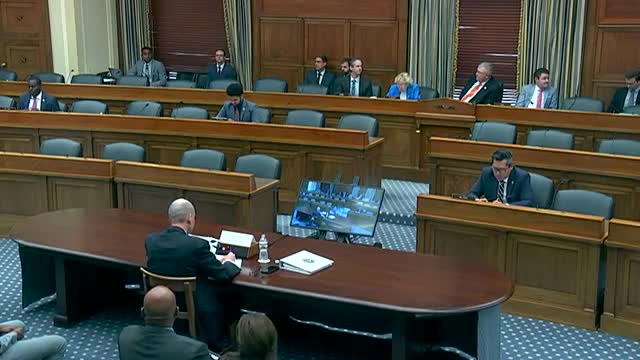Offshore wind energy faces challenges but promises jobs and power
June 27, 2024 | Science, Space, and Technology: House Committee, Standing Committees - House & Senate, Congressional Hearings Compilation

This article was created by AI summarizing key points discussed. AI makes mistakes, so for full details and context, please refer to the video of the full meeting. Please report any errors so we can fix them. Report an error »

During a recent government meeting, officials highlighted the significant progress and challenges facing the offshore wind energy sector, particularly in Rhode Island, which is home to the nation's first commercial offshore wind farm. The facility, equipped with five turbines, generates enough electricity to power approximately 17,000 homes annually, marking a pivotal step in the transition to clean energy.
The discussions centered on the ambitious goals set by President Biden to deploy 30 gigawatts of offshore wind energy by 2030, alongside Rhode Island's commitment to achieving 100% renewable energy by the same year. However, officials acknowledged that the development of offshore wind faces several obstacles, including an underdeveloped domestic supply chain, lengthy permitting processes, and challenges in integrating new energy sources into the existing grid.
To address these issues, the President's fiscal year 2025 budget request includes a proposed $62 million increase in funding for the Wind Energy Technologies Office. This funding aims to bolster research, development, and deployment activities essential for expanding offshore wind capabilities. Officials emphasized the importance of collaboration with various stakeholders, including the IRS, to ensure that tax incentives are tailored to support offshore wind projects effectively.
Despite the current challenges, there is optimism that conditions for offshore wind development are improving. Officials noted ongoing efforts to engage with offshore wind developers to explore financing options that could lower capital costs and facilitate project implementation. The meeting underscored the potential for job creation within the sector, particularly as supply chains are developed and strengthened.
Rhode Island's leadership in offshore wind, coupled with strong partnerships with labor unions, positions the state as a key player in the clean energy revolution, paving the way for a sustainable energy future.
The discussions centered on the ambitious goals set by President Biden to deploy 30 gigawatts of offshore wind energy by 2030, alongside Rhode Island's commitment to achieving 100% renewable energy by the same year. However, officials acknowledged that the development of offshore wind faces several obstacles, including an underdeveloped domestic supply chain, lengthy permitting processes, and challenges in integrating new energy sources into the existing grid.
To address these issues, the President's fiscal year 2025 budget request includes a proposed $62 million increase in funding for the Wind Energy Technologies Office. This funding aims to bolster research, development, and deployment activities essential for expanding offshore wind capabilities. Officials emphasized the importance of collaboration with various stakeholders, including the IRS, to ensure that tax incentives are tailored to support offshore wind projects effectively.
Despite the current challenges, there is optimism that conditions for offshore wind development are improving. Officials noted ongoing efforts to engage with offshore wind developers to explore financing options that could lower capital costs and facilitate project implementation. The meeting underscored the potential for job creation within the sector, particularly as supply chains are developed and strengthened.
Rhode Island's leadership in offshore wind, coupled with strong partnerships with labor unions, positions the state as a key player in the clean energy revolution, paving the way for a sustainable energy future.
View full meeting
This article is based on a recent meeting—watch the full video and explore the complete transcript for deeper insights into the discussion.
View full meeting